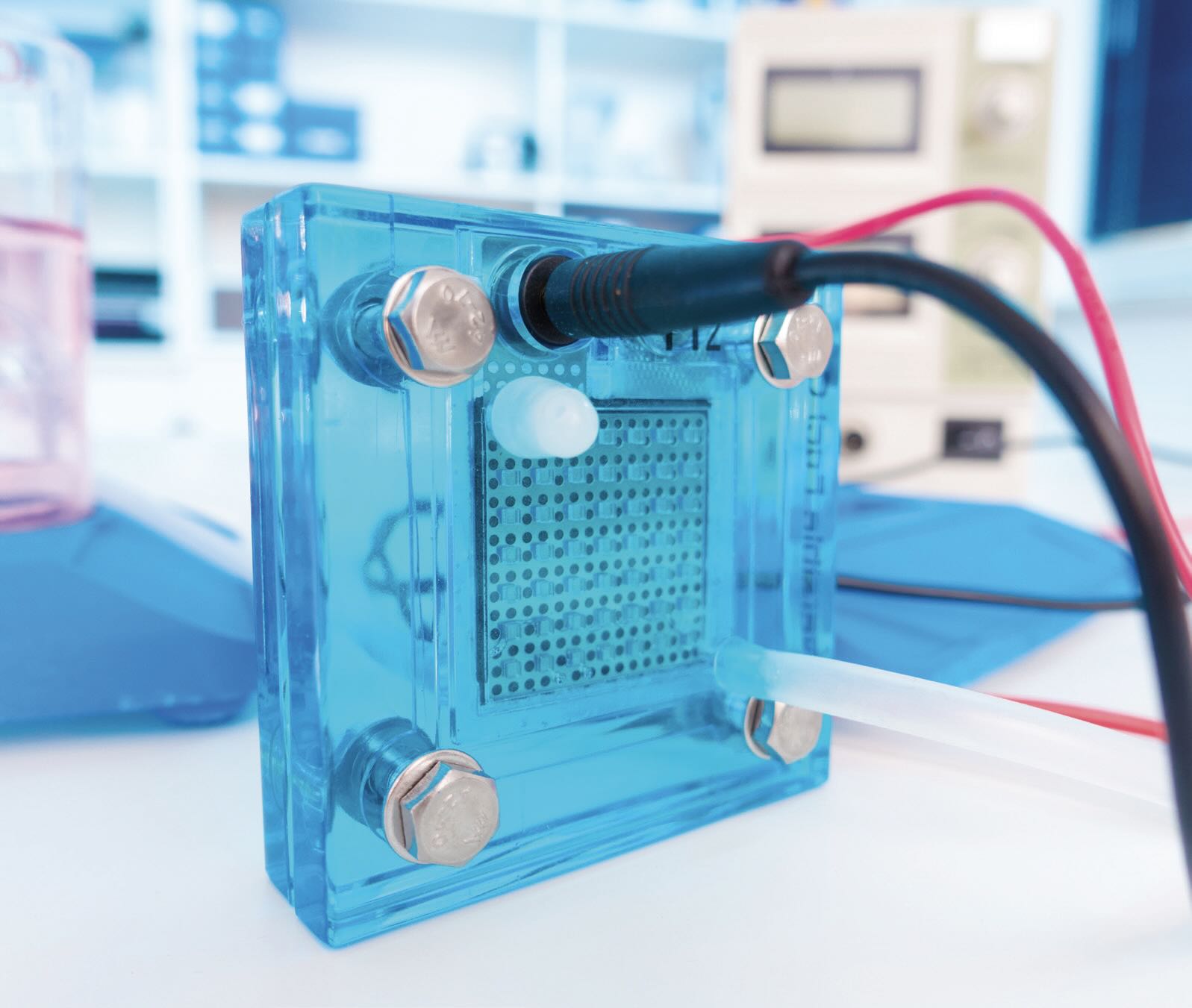Executive Summary
Digital technologies, such as artificial intelligence (AI), machine learning (ML) and simulation, are developing at a rapid pace. Readers recognize the impact these technologies could make on the tribology field, though most agree that the physical testing of lubricants will not be fully replaced by these methods. One of the most reported benefits is saving time, but implementation challenges can make it difficult to achieve.
Q.1. Describe which digital technologies have the potential to impact the future of tribology.
AI algorithms should be able to be used for tribological design in certain scenarios.
AI to evaluate the materials in a tribocontact to achieve performance requirements.
Data recording and big data interpretation. High-speed cameras. Digital twins of complex tribotest rigs.
AI and robotics.
Ultrasonic data analysis of tribocontact zones to monitor lube/equipment life.
AI could have a huge impact in tribology for rapid predictive and preventative failure analysis, as well as new lubricant formulations. Quantum computing also could usher in a whole new era of tribology with high-speed analysis for testing.
AI/ML tools, Internet of Things (IoT), digital twins.
Modeling and simulation.
Data management to eliminate silos and repetitive work. Using data to predict and simulate directionally additive interactions in future formulations. Then random physical testing to confirm or correct model.
Definitely simulation and modeling.
Digital twins and ML.
The main digital transformation will be in the use of AI/ML to aid in the discovery of new tribological materials, to help in modeling more complex engineering systems and to aid fundamental studies, for example, by designing precise interaction potentials.
ML/AI.
AI together with calculation tools (e.g., computational fluid dynamics [CFD] together with AI technology).
Documentation of input data and the accurate recording of this data will increase the accuracy of retained information and the resulting corrective action.
Simulations and AI.
ML, AI, IoT/edge-based sensing.
Predictive modeling.
Data analysis and model development with the use of AI and ML technologies will accelerate the pace and scale of tribology research and product development. Materials by design efforts will be able to move from only predicting property-structure relationships to being able to predict complex thermal, mechanical and chemical relationships under various environmental and mechanical conditions, which is a prerequisite for predicting tribological.
Continuous data acquisition, integration with digital twins, physics informed neural networks, decision trees for lubricant decision.

AI!
Tribology remains original, however the use of AI limits its plausible parameters.
Well-developed sensor for oil analysis; lubricants formulation.
Do you think modeling and simulation can replace physical testing of lubricants in the next 10 years?
Yes
22%
No
78%
Based on an informal poll sent to 15,000 TLT readers.
Digital technologies can significantly reduce the physical prototyping and test, hence the cost and time to the market. They also can provide a physics-based understanding and design tool, which allows for objective development and optimization of tribological systems for the purpose.
Definitely ML is a key feature to help tribologists evaluate and interpret test results. Automated processes and DOI will help to speed up the research and design processes and decrease time to market.
Online measurements synchronized with other production parameters that can be further processed in global databases (data science).
Digital technologies may accelerate the pre-selection of materials, solutions or test conditions for greater correlation and efficiency—and provided that the experimental data are sufficient and representative. The bottleneck for implementing these tools remains generating or having access to sufficient data. So it is appropriate to continue experimenting.
First principle-based model and data analytics.
Integrations utilizing auto lubrication systems (that must be intelligent, intuitive, cost effective and simple to install) with permanently mounted vibration, thermographic, ultrasonic, etc., equipment. These systems will need to be able to connect along a Bluetooth (or another simulcast) network so that systems can be pieced together at a customer’s discretion.
Machine and deep learning, digital twins.
Design and construct.
AI and ML but real-time tests are always superior to these technological results.
AI, ML, digital twins, computer simulation on all scales (atomistic to macro).
AI, ML.
AI and data management.
Digital twins have the potential to aid tribology research with initial proof of concept, allowing for more selective testing; however there is no replacement for repeated real-world tests in what is a stochastic process.
Generative AI.
Q.2. Describe the greatest value you see digital technologies providing in the development of lubricants, especially in the context of the energy transition.
Tribological performance prediction and interface optimization design.
Digital technology for advancement of innovation at man-machine interface.
Digital twins and advanced computer modeling, hand in hand. Many different solutions can be screened, also such that do not exist or violate the laws of physics, etc.
AI, ML, simulation and big data will help to develop lubricants and their applications.
Ability to real-time model and analyze data collection to extend equipment and lubricant life.
What has the hardest challenge been in your digital transformation journey?
Change management (ways of working)
31%
Data (silos, quality, governance)
42%
No silver bullet to solve all the challenges—need to look for
multiple solutions and stitch them together to make it fit for purpose
67%
What challenge? It has been easy!
2%
Not applicable
12%
Based on an informal poll sent to 15,000 TLT readers. Total exceeds 100% because respondents were allowed to choose more than one answer.
While it may not be the least costly solution, for critical applications digital technologies it may be the more robust and accurate way to solve problems.
Reduced development time and cost; optimization of supply chains and sales channels; knowledge retention.
Minimize waste and physical testing. Better management of blend models. Reduce repetitive testing.
Definitely speeding time to market.
I’m skeptical of any value. The initial promise of digital technologies was efficiency, productivity and cost savings. However, many organizations find themselves grappling with implementation delays, unexpected costs and unmet expectations. Most of the new tools have complicated my workflows, and data has been scattered across fragmented tools that haven’t been integrated.
The above statement applies to both energy-related and non-energy-related processes. We are already far behind where we should be in the energy transition, and the design of new lubricants will necessarily follow the political developments.
ML can help in the prediction of the properties of lubricants, so it would be possible to reduce the number of physical tests to those lubricants that have previously been predicted as promising.
Shorten the discovery time, allow engineers/researchers to quickly evaluate different components.
The elimination of any, or most, intuitive analysis will be of great value if the value of heritage knowledge is not discredited.
Cost reduction, energy consumption.
Sensors for remote measurements and use of AI/ML for analytics for drawing valuable insights—lubricant formulations, choice of additives and their dosages for faster optimization. Also the lubricants condition monitoring could be coupled to this process to provide a life cycle simulation.
Property-structure-chemistry-application databases will become supercharged by using AI/ML technologies by finding connections that were not evident before.
Better lubricant decision, integrated machine and lubricant design and predictive maintenance. Using some ML tools, it is possible to get lubricant characteristics and properties that most contribute to the performance of the component and the lubricant.
Time and cost saving.
Fast solutions.
Basic things remain the same while important points can be updated using digital means for crystal clear information.
Time savings. It is going to reduce energy consumed because tests will be simulated in the lab; good simulation will help to predict efficiency.

Rapid development and design of systems in the fast-moving landscape of energy transition, electrification and hydrogen or other green technologies’ implementation. Simulation also can support optimization of the contact for its end use, to minimize frictional losses or increase the life of components (reduced carbon footprint).
Linking experimental data with substance data and target specification via big data evaluation and ML algorithms will be essential.
There is a value in condition monitoring. Lube analysis is usually based on sampling, so it is very manual. Online measurements can provide data all the production day long. Then the lube data would be in the same format as the other production data, ready to be analyzed just as these other parameters.
It is above all a support for experimental plans, but it will not revolutionize the approach or process of developing solutions. Currently digital tribology is not mature.
Provide insight on applications.
Sensor systems will need to be much more robust while maintaining their simplicity. Current issues with monitoring or censoring systems/components are unable to hold up to increased workloads. When coupled with a general decline in skilled manufacturing, formulating and “meets or exceeds” claimed products, systems degrade and are found to have shorter than expected lifecycles regardless of their engineered intent.
Proper modeling and predicting of possible chemical and physical interaction between components in lubricants or between lubricants and mating surfaces.
Modeling and simulation.
Support with development and testing using AI/ML.
Lower friction and wear.
Digital twins can create a reduction in the intensity of testing, and the need to test such a large range of lubricants, but there is no replacement for data produced in a real-world test.
Faster product development, also identifying components and formulations that we haven’t considered before.